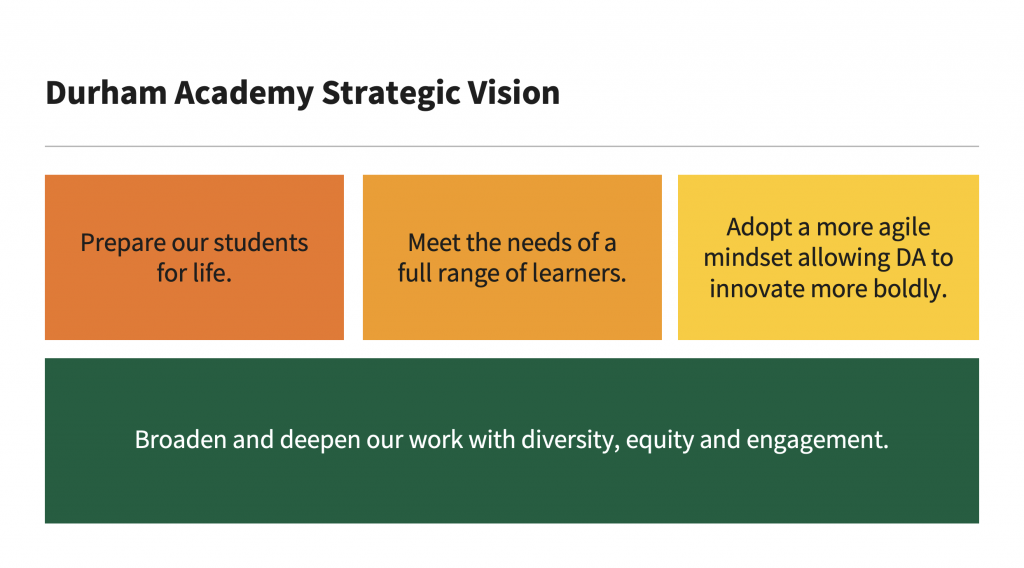During our August back-to-school meeting for faculty, I challenged my colleagues (and myself!) to create environments and experiences that are more:
-
- humane
- sustainable, and
- open to the genius of our students
I won’t dwell on the humane part here, but I do hope we are doing all we can to overcome the dehumanizing brutality of last 19 months. In many ways, the best parts of our humanity were robbed and blocked by lockdowns and masks, by fear and fatigue, by distance and screens. The pandemic too took simple pleasures away from us: things like touch. Or assemblies and concerts, CavDomes and dances. Or just being able to rub elbows with all our friends and classmates. What fun – and what a profound gift – to be fully back on campus together this year!
My second challenge is more relevant to this Living Sustainably blog. This summer’s report from the Intergovernmental Panel on Climate Change made clearer than ever the urgency of our work to give students knowledge, guidance and opportunities to engage in climate action if they have any hope of solving the planetary problems we oldsters have created.
I hate to say it, but this is an area of leadership where I have never been strong. To be frank, environmental sustainability is an sphere in which DA has not traditionally excelled.
But I am trying to do better. Almost two years ago, I stopped eating meat. In July, my wife and I moved out of a big house with a big lawn and into a small condo. In August, I started driving an electric car (right after I came back from Bragging Camp!).
More important than my personal choices are the professional opportunities I have to support the Earth–greening efforts of colleagues like Mrs. Streck and Mrs. Evans in the Lower School, Dr. Shebalin and Mrs. Kanoy in the Middle School, Ms. Bessias and Ms. Caruso in the Upper School.
Even more important than that: opening doors to our students to research, organize and activate on behalf of a healthier planet.
The UN’s “red alert for humanity” can feel paralyzing, especially given the quantity of other red alerts in our lives right now. But we can help students push through this paralysis by balancing facts, fear, hope and action.
The action is where students come in – and why my third challenge (open the door as wide as possible to the genius of our students) may prove even more relevant than the other two.
Whether or not they’re into green initiatives, each and all of our students have unique gifts and abilities – curiosities and potential that we do our best to tap through our curricula. But we don’t always allow individual students to shine in the ways they best can.
DA is getting better at this, and this year we’ll accelerate our progress. In case you haven’t already seen this introduction to DA’s new Strategic Vision, you should at least know the big, hairy, audacious goals that will guide our work in the coming years:

What will this mean for students? Time will tell. While that may sound like an administrator’s waffling dodge, it is rather a practical assessment that most of our specific reforms are a) still to be designed and executed and b) dependent more than ever on the creativity of students and teachers.
What we know already: those strategic objectives (along with the creative disruption of COVID) drove us to revise our daily/weekly schedules. We have reduced the number of transitions per day and lengthened classes for deeper learning. We have reduced the nightly crush of homework and created more time for students to dive deeper into their scholastic and co-curricular interests. We are expanding access for independent, choice-based learning – in and beyond opportunities like STEAM by Design, the Durham Challenge, District C, and the Independent Study Program.
DA’s teachers and leaders are asking the following questions more actively than ever:
- How can we make learning relevant to individual students – their quirky gifts and unique passions?
- How can we give students authentic practice for living in the world – addressing real problems and building real relationships with people beyond their bubbles?
- How do we help students identify their own areas of genius and map those onto the needs of the world? Knowing how passionately our students care about the environmental needs of the world, I think this new strategic vision has the potential to make DA greener than ever before.
